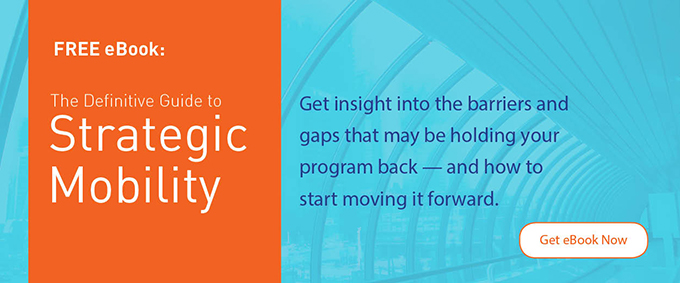How information and data can tell the Mobility story

By: Carie Karsh
Senior Director, Financial Planning & Analysis
You want to push Mobility forward for your company. But amid significant evolutionary trends — including shorter assignments, global uncertainties and a workforce craving international experience — where do you begin? Our blog series, “Transformative Insight for the World Ahead” explores emerging challenges as you strive to leverage your program as a key differentiator for people on the move.
You know how important Mobility is for expanding operations into new regions, developing talent, enhancing your brand and capitalizing on new opportunities. You also know that you can’t transform your strategy alone. You need help. It’s time to use “show and tell” to sell your vision to other key stakeholders.
Business unit heads and C-level executives are pulled in many competing directions. You need to capture their attention so they realize the importance of bolstering your Mobility program. Speak their language. Use statistics, metrics and analytical data to showcase your program’s strengths, identify where improvements can be made and to articulate its contributions.
Only 43% of business executives feel they have access to the information they need.*
Only 20% of business executives feel the information they have adequately answers their most pressing business questions.*
Prove your worth
Data simplifies the decision-making process and helps you uncover useful insights. That’s why Sales, IT, Accounting, Marketing and other business units collect critical information across the organization’s systems, from internal and external customers, about competitors and many other sources. So should you.
Find the data—some of it will be hiding in different systems, so you may need help to locate it. And, with the help of technology, you can now use diagnostic tools designed specifically for Mobility to find inefficiencies and embolden proven strategies to help drive your Mobility program forward. Use it to find the answers to important questions about your program, including:
- Where is your Mobility program most efficient? Least efficient?
Reach out to relocated employees and those working with them. Find out where you’re performing well — and where you need to dedicate more resources. Identify the cost of each engagement. Measure it against the length of the engagement. Check the percentage of employees who remain with the company after the engagement. Determine if the subsequent group of potential relocated employees are more or less promising. Search for tangible data to shape your assessment of your Mobility program and how it’s perceived.
- Which business functions are most informed about Mobility initiatives? Least informed?
It doesn’t matter if you have one relocated employee or thousands. Each engagement involves a wide range of people and departments within your organization. Are you communicating strategies, initiatives and other information succinctly with all of them? Use tangible measurements to discover how connected each group is to your Mobility program. There are now affordable, comprehensive programs available that identify gaps between units and functions throughout organizations using metrics and proven formulas.
- What specific business practices can be used to bridge gaps and improve performance?
You can learn a lot from data if you know what you’re looking for. Or, if you know who to turn to for help analyzing it. Whether you and your knowledgeable internal team studies the data, or involve an outside consultant, you can pinpoint the specific types of actions needed to improve performance for your Mobility program. And remember, it’s about more than simply making the right decision. Timing is everything — you have to make those decisions at the right moment.
Discover the power of information. Share it with key stakeholders to bolster your initiatives and to find your internal champion moving forward.
*Domo, “From Big Data to Better Decisions“
